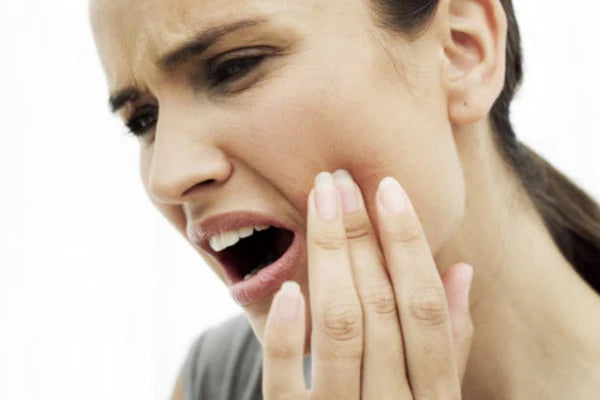If you are here, it is because you have a toothache. Toothaches are generally not benign and should be treated in all cases. However, when the pain is due to cavities or periodontitis and these conditions are not treated, they can lead to tooth destruction or tooth loss. Toothache is both related to an oral hygiene problem that leads to an oral health problem. But it has many other origins.
Here is a guide that will give you all the explanations you need to understand what toothache is.
Toothache: What is it ?
Toothache can spread to different parts of your teeth. Indeed, vessels and nerve fibers are present in the dental pulp, located in the center of the tooth and present in the dentin. The dentin is present under the enamel of the teeth and contains nerve endings. They come from the maxillary and mandibular nerves. In addition to the teeth, these nerves innervate the skin under the eye, cheek, nostrils, mouth, lips, gums, chin and parts of the outer ear. There is no age limit for dental pain. It can be felt from a young age when teething or even if you are an adult or elderly. The important thing is to understand its origin to better understand it.
The different causes of toothache
The most common cause of toothache is tooth decay. It is an infectious disease that affects the tooth enamel, the dentin and the dental pulp. It affects many children but also a large majority of adults. At first, the tooth becomes sensitive to hot and cold before the pain sets in. They are mainly due to poor dental hygiene, but there are many other causes:
A bacterial infection
A dental infection is most often caused by an invasion of bacteria that grows in the mouth. It can also be caused by an abscess, but also by gingivitis or alveolitis. The pain can be more or less intense, dull or throbbing. Small amounts of bleeding may occur, as well as a lesion in the affected area.
The presence of a dental abscess
A dental abscess is an accumulation of pus related to a bacterial infection in a tooth or gum. It surrounds the tooth or gum. It usually causes severe pain. It sometimes manifests itself by other local or general symptoms such as discomfort or swelling of the mouth which causes pain.
An oral trauma
A dental trauma is an injury to one or more teeth. It is usually caused by an impact. They most often affect the "front teeth" because they are much more exposed. Premolars and molars are more rarely affected. However, it causes a lot of tooth pain in all cases.
A disease of the gums
The disease of the gums or periodontal disease is a bacterial infection responsible for an inflammation of the tissues supporting the tooth. It is translated by a gingivitis then a periodontitis. It is due to the accumulation of bacteria between the teeth and at their junction with the gum. Indeed, these bacteria form dental plaque which hurts the teeth.
Bruxism
Bruxism would be more manifested by a dental clenching and is characterized by grinding movements but also friction. Bruxism can be unrelated to any pathology or medical treatment. On the other hand, it is sometimes secondary to another pathology such as sleep disorders, neurological or psychiatric disorders or to the use of certain medications.
Sinusitis
Sinusitis usually occurs after a cold and begins by affecting the maxillary sinuses, which are located near the root of the molars. The pressure caused by the mucus build-up on the nerves in the area can cause pain in various places, including the head and teeth.
Techniques to stop toothache
1.Cold compresses
Toothache often leads to swelling. So it can be especially helpful to put a cold compress on your cheek to quickly soothe the toothache in the area that hurts. This is a good technique because it has an anesthetic action that can relieve your tooth pain. It helps to reduce the inflammation well.
2. Clove oil
Clove oil can reduce the pain and swelling associated with a toothache. This home remedy is simple: you need to soak a cotton ball with a few drops of clove oil. You can then gently pass the cotton ball over your aching teeth and gums. It is particularly effective because it contains eugenol.
3. Mouthwash with salt water
In case of tooth pain and swollen gums, you can make a mouthwash with warm salt water can relieve you. You just need to dissolve teaspoons of salt in a quarter of a liter of warm water. You should perform your mouthwash before spitting out the mixture. The water will soothe the pain and the salt will reduce the swelling of the gum tissue.
4. Local analgesics for toothache
To support your toothache, you can simply take a local painkiller without a prescription. You should not put it directly in contact with the affected area. This could cause burning of the gums and increase the discomfort. These medications make the discomfort go away until your dental appointment.
You can also brush your teeth well by using a sonic toothbrush like the Y-Brush. This toothbrush has several modes of sonic vibrations: soft, normal and intensive that take into account your dental sensitivity.
We hope this guide has helped you understand that a toothache is not to be taken lightly, as toothache can affect a large part of your dentition. Toothache can have several origins, which is why it is especially important to know where it comes from by asking your dentist for advice. He or she is the only one who can tell you which technique is best suited to end your toothache.



